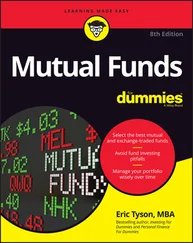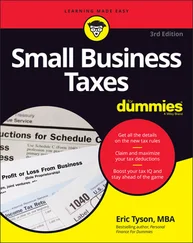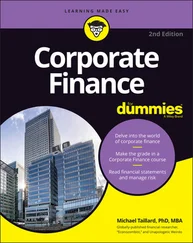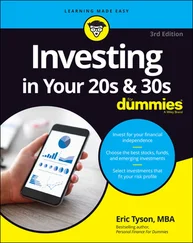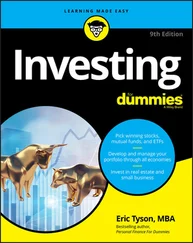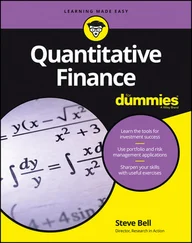Factoring some risk into your investment plan
In addition to the time horizon we discuss in the preceding section, your need to take risk also should be factored into your investment decisions. If the money that you’re investing for retirement grows too slowly, which may happen if you stashed it all in bank accounts and treasury bills, you may not be able to retire when you want or live the lifestyle you desire. To reach your retirement goals, you may need to take more risk.
 Although your retirement goals may require you to take more risk, you don’t necessarily have to. Retaining a balanced portfolio of stocks and bonds where you have appreciation potential from the stocks and more income and less volatility from bonds sounds good in theory. But if you’re going to be a nervous wreck and follow the stock market’s every move, it may not be worth it for you to take as much risk. In that case, you need to consider rethinking your goals. Also, if you’re in the fortunate position of not needing to take much risk because you’re well ahead of your retirement savings goals, taking more risk than necessary may cause you to lose what you have accrued. ( Chapter 3provides more on retirement planning.)
Although your retirement goals may require you to take more risk, you don’t necessarily have to. Retaining a balanced portfolio of stocks and bonds where you have appreciation potential from the stocks and more income and less volatility from bonds sounds good in theory. But if you’re going to be a nervous wreck and follow the stock market’s every move, it may not be worth it for you to take as much risk. In that case, you need to consider rethinking your goals. Also, if you’re in the fortunate position of not needing to take much risk because you’re well ahead of your retirement savings goals, taking more risk than necessary may cause you to lose what you have accrued. ( Chapter 3provides more on retirement planning.)
Keeping the bigger picture in mind
When purchasing a new investment, make sure you consider your overall financial plan. Investors often read articles or get tips from colleagues and wind up buying some of those investments. Investing without doing sufficient homework leads to a hodgepodge portfolio that’s often not properly diversified, among other problems. Failure to make an overall plan usually results in a recipe for failure, not success.
For example, when Eric worked as a financial planner/counselor, he was surprised at how often he’d meet with clients who had excess cash in low-interest money market funds or savings accounts while they carried high-cost debts, such as auto loans and credit-card balances. He was able to convince many of them to pay down the high-cost debt after he showed them how much they could save or make by doing so. (This same logic holds for older, more conservative investors who can pay down mortgages.)
Likewise, Eric found that investors who preferred individual stocks would fret when one of their holdings fell. Because such investors wouldn’t examine their overall portfolio’s performance, too frequently they would unnecessarily dump a currently depressed stock. They’d dwell on that stock’s recent decline and overlook how little impact this one holding had on their overall portfolio.
 This strategy is particularly dangerous if you fail to consider the big picture and overinvest in employer stock. You may think you’re being a loyal team player, but watch out. This strategy is hazardous because a company that falls on hard times may not only lead to the loss of a job but also to the loss of retirement assets when the stock takes a permanent nose dive. As you approach your senior years, investing more than 10 percent of your financial assets in your employer’s stock is usually too risky unless you can truly afford the risk.
This strategy is particularly dangerous if you fail to consider the big picture and overinvest in employer stock. You may think you’re being a loyal team player, but watch out. This strategy is hazardous because a company that falls on hard times may not only lead to the loss of a job but also to the loss of retirement assets when the stock takes a permanent nose dive. As you approach your senior years, investing more than 10 percent of your financial assets in your employer’s stock is usually too risky unless you can truly afford the risk.
When you’re investing for longer-term financial goals such as retirement, be sure to invest in an array of different investments. Diversified investments may include such things as stock mutual funds (both U.S. and international), exchange-traded funds (ETFs), bonds, and, perhaps, real estate.
How you divide your money among these different types of investments is known as asset allocation. Asset allocation need not be complicated or intimidating. As a general rule, you should conduct asset allocation for money invested for the longer term — that is, at least more than five years, though preferably ten or more years. See our advice and recommendations for determining an appropriate asset allocation in Chapter 3.
Before you begin the process of allocating your assets, make sure you have an emergency cash reserve of three to six months’ worth of living expenses. Set aside even more if your income and job are unstable and you don’t have family or friends you could tap for help. Three months’ worth of living expenses, on the other hand, is probably sufficient if your income is safe and stable or you have other resources you can easily tap.
Other investments that you hold outside of retirement accounts, such as stocks, bonds, and mutual funds and ETFs that invest in stocks and bonds, can quickly be converted into cash. However, the problem with considering these investments for emergencies is that because they fluctuate in value, the selling price may be much less than what you paid originally.
Surveying Different Investments
If you’re ready to take a closer look at which investments are best for you or if you want to modify your investments to better meet your needs, you’ve come to the right place. Getting your investment portfolio in order with your money in the right vehicles is an important step to prepare for retirement. To help you settle on the best investments for your situation, we discuss the major types of investments and when you should consider using them.
Comparing lending investments to ownership investments
Investors are often bewildered at all the investment options from which they can choose. But we can simplify things for you. All the investments you may choose from fall under one of the following two categories:
Lending investments: A lending investment, as the name suggests, is an investment where you lend your money, typically to an organization. For example, when you place your money in a bank account, such as a savings account, you’re essentially lending your money to a bank for an agreed-upon interest rate. Bonds, which are IOUs issued by companies, are another common lending investment. When you buy a newly issued ten-year bond from Verizon at 5 percent, for example, you’re lending your money to Verizon for ten years in exchange for 5 percent interest per year. If things go according to plan, you’ll get your 5 percent interest annually, and you’ll get your principal (the original investment) back when the bond matures in a decade.
Ownership investments: With ownership investments, by contrast, you own a piece of an asset that has the ability to produce profits or earnings. Stocks, which are shares of ownership in a company, and real estate are ownership investments.In a capitalistic economy, individual investors can build wealth faster by being owners. For example, say Verizon doubles in size and profits over the next seven years. As one of their bondholders, you won’t share in the growth, although it will help ensure they can make their bond interest payments and final repayment when the bond matures. As a stockholder, however, you should benefit from a stock price driven higher by greater profits. Ownership investments can also produce income, such as the dividends paid on some stocks or the rental income produced when you rent out real estate.
Over the past two centuries, U.S. stock market investors (owners) have earned an average of 9 percent per year, whereas bond investors (lenders) have earned about 5 percent per year.
 As we mention in the earlier section “ Understanding risk,” risk and return generally go hand in hand. If you seek safe investments — investments with low volatility and low likelihood of the value of the investment declining — you’ll usually have to settle for lending investments with relatively low returns. If you seek higher returns well ahead of the rate of inflation, on the other hand, you must use investments that provide an ownership stake and could either rise or fall more significantly in value, especially in the short term.
As we mention in the earlier section “ Understanding risk,” risk and return generally go hand in hand. If you seek safe investments — investments with low volatility and low likelihood of the value of the investment declining — you’ll usually have to settle for lending investments with relatively low returns. If you seek higher returns well ahead of the rate of inflation, on the other hand, you must use investments that provide an ownership stake and could either rise or fall more significantly in value, especially in the short term.
Читать дальше
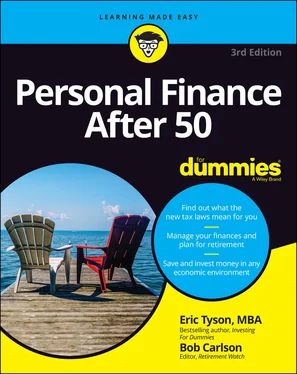
 Although your retirement goals may require you to take more risk, you don’t necessarily have to. Retaining a balanced portfolio of stocks and bonds where you have appreciation potential from the stocks and more income and less volatility from bonds sounds good in theory. But if you’re going to be a nervous wreck and follow the stock market’s every move, it may not be worth it for you to take as much risk. In that case, you need to consider rethinking your goals. Also, if you’re in the fortunate position of not needing to take much risk because you’re well ahead of your retirement savings goals, taking more risk than necessary may cause you to lose what you have accrued. ( Chapter 3provides more on retirement planning.)
Although your retirement goals may require you to take more risk, you don’t necessarily have to. Retaining a balanced portfolio of stocks and bonds where you have appreciation potential from the stocks and more income and less volatility from bonds sounds good in theory. But if you’re going to be a nervous wreck and follow the stock market’s every move, it may not be worth it for you to take as much risk. In that case, you need to consider rethinking your goals. Also, if you’re in the fortunate position of not needing to take much risk because you’re well ahead of your retirement savings goals, taking more risk than necessary may cause you to lose what you have accrued. ( Chapter 3provides more on retirement planning.) This strategy is particularly dangerous if you fail to consider the big picture and overinvest in employer stock. You may think you’re being a loyal team player, but watch out. This strategy is hazardous because a company that falls on hard times may not only lead to the loss of a job but also to the loss of retirement assets when the stock takes a permanent nose dive. As you approach your senior years, investing more than 10 percent of your financial assets in your employer’s stock is usually too risky unless you can truly afford the risk.
This strategy is particularly dangerous if you fail to consider the big picture and overinvest in employer stock. You may think you’re being a loyal team player, but watch out. This strategy is hazardous because a company that falls on hard times may not only lead to the loss of a job but also to the loss of retirement assets when the stock takes a permanent nose dive. As you approach your senior years, investing more than 10 percent of your financial assets in your employer’s stock is usually too risky unless you can truly afford the risk. As we mention in the earlier section “ Understanding risk,” risk and return generally go hand in hand. If you seek safe investments — investments with low volatility and low likelihood of the value of the investment declining — you’ll usually have to settle for lending investments with relatively low returns. If you seek higher returns well ahead of the rate of inflation, on the other hand, you must use investments that provide an ownership stake and could either rise or fall more significantly in value, especially in the short term.
As we mention in the earlier section “ Understanding risk,” risk and return generally go hand in hand. If you seek safe investments — investments with low volatility and low likelihood of the value of the investment declining — you’ll usually have to settle for lending investments with relatively low returns. If you seek higher returns well ahead of the rate of inflation, on the other hand, you must use investments that provide an ownership stake and could either rise or fall more significantly in value, especially in the short term.